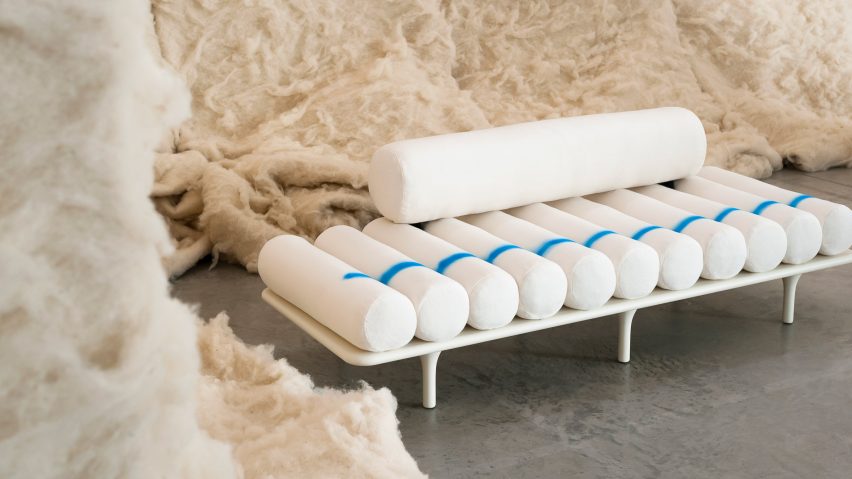
Six key trends from Milan design week 2023
As the most important design event of the year has come to a close, we look back at the biggest industry trends from Milan design week 2023, including everything from maximalism to algorithmic design.
This year saw the Salone del Mobile furniture fair return to its regularly scheduled time slot in April for the first time since the start of the pandemic. Attendance was up 15 per cent from last year – totalling more than 300,000 visitors – although the fair itself was markedly smaller.
Many of the bigger brands instead staged attention-grabbing installations in the city centre as part of the fuorisalone events programme, among them a growing roster of luxury fashion houses from Bottega Veneta to Loewe.
While brands largely steered clear of Instagram bait and went hard on maximalism, smaller designers explored innovative production techniques making use of everything from reclaimed materials to artificial intelligence.
Here's a breakdown of the biggest trending themes that emerged throughout the week:
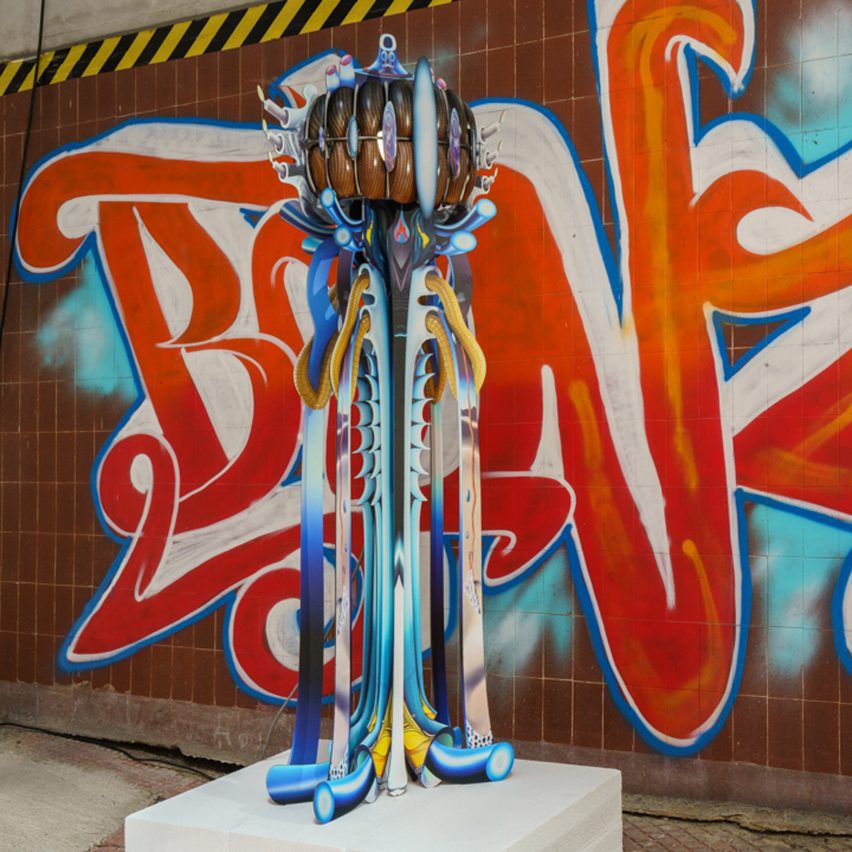
Digital meets physical
With real-life events resuming, designers left the metaverse firmly in the rearview mirror and instead experimented with using digital design strategies to create physical products.
At the Alcova exhibition, Brooklyn practice Forma Rosa Studio presented a series of ceramic stools and lights, whose fractal forms were generated by an algorithm and realised by adapting traditional pottery techniques.
Nearby, designer Ryan Decker showcased a duo of alien-looking lights (above) combining sculptural handmade components with flat sheets of aluminium that were printed with digital renders and AI-generated textures to make them appear three-dimensional.
And at Nilufar Gallery, French designer Audrey Large returned with her biggest Milan show to date, presenting furniture with swirling organic forms that are drawn by hand before being realised using a modified 3D printer.
Taking a more interactive approach, Australian Studio Snoop presented what it calls the "world's first AI designer" – a chatbot in the vein of ChatGPT that helps designers to optimise their work.
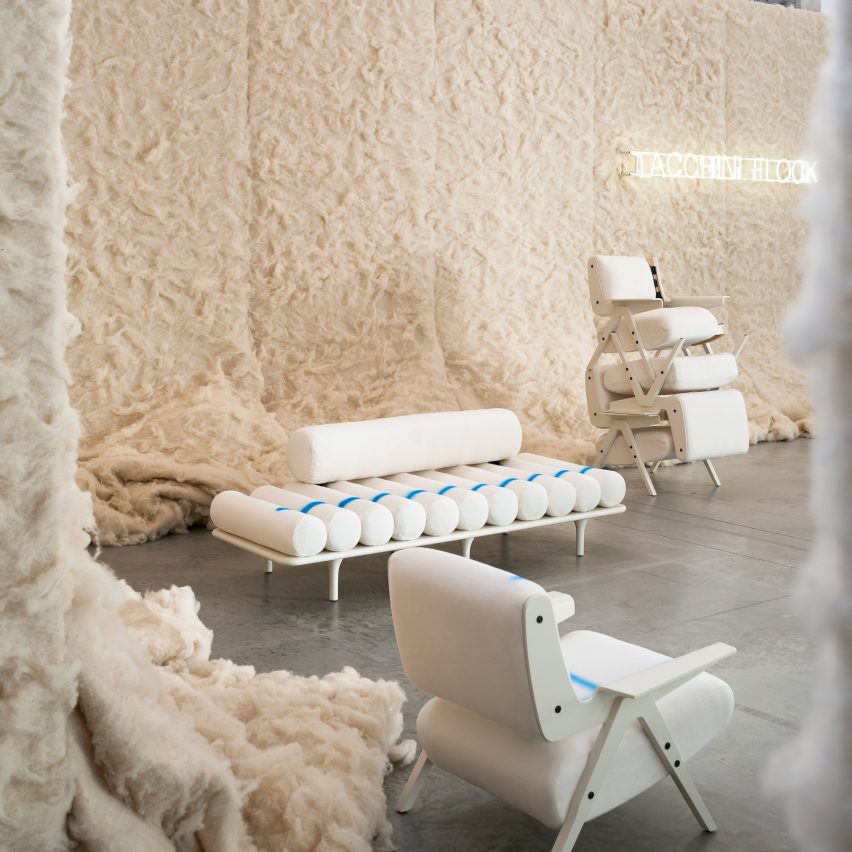
Industrial waste materials
From agriculture to construction, using waste materials produced by other industries continues to be a popular strategy for designers looking to reduce the environmental impact of their products.
Design studio Formafantasma swapped plastic upholstery foam for surplus sheep's wool and natural latex in a collaboration with furniture brand Tacchini (top and above), while Californian firm Prowl Studio used waste hemp fibres to fortify the bioplastic that forms its industrially compostable Peel chair.
Nearby at Alcova, material research studio Atelier Luma presented acoustic panels formed from a byproduct of rice production alongside bioplastic stools made up of rice hulls and pressed olive waste.
Other designers instead worked to give new life to important demolished buildings. Wooden handrails from Hampshire's Fawley Power Station now form a series of tables and chairs by Korean designer Subin Seol, while facade tiles from Alvar Aalto's iconic Finlandia Hall were recycled to form a display table for the Habitarematerials exhibition.
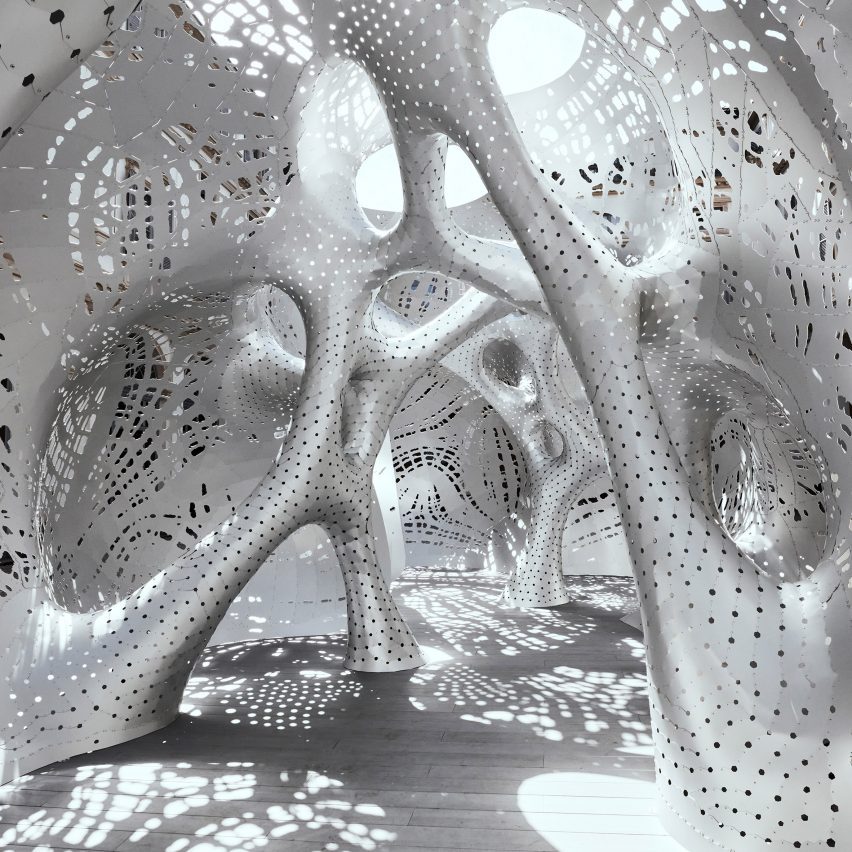
Less Instagram bait
After producing some of the most Instagram-friendly installations in Milan over the past two years, including four monumental water tower structures that glowed like lanterns, fashion house Hermès took a more pared-back approach for the 2023 edition.
"This year, the scenography is not that overwhelming," Hermès Maison's co-artistic director Charlotte Macaux Perelman told Dezeen.
Apart from a few outliers – among them Marc Fornes's pavilion for Louis Vuitton (above) and a sparkly installation by German lighting brand Ingo Maurer inside the Porta Nuova – this disregard for being Instagrammable was reflected across the city.
Instead, brands focused more on providing an experience for visitors. Google recruited Lachlan Turczan to create a blacked-out space reminiscent of a theatre, where passersby could sit and watch the trippy images created by the artist's giant water-covered speakers.
Others followed the Alcova model and opened up historic buildings to the public, with Danish furniture brand Gubi showcasing its products inside a 1930s lido and Italian designer Cristina Celestino taking over the headquarters of the Tennis Club Milano Bonacossa, designed by Milanese architect Giovanni Muzio.
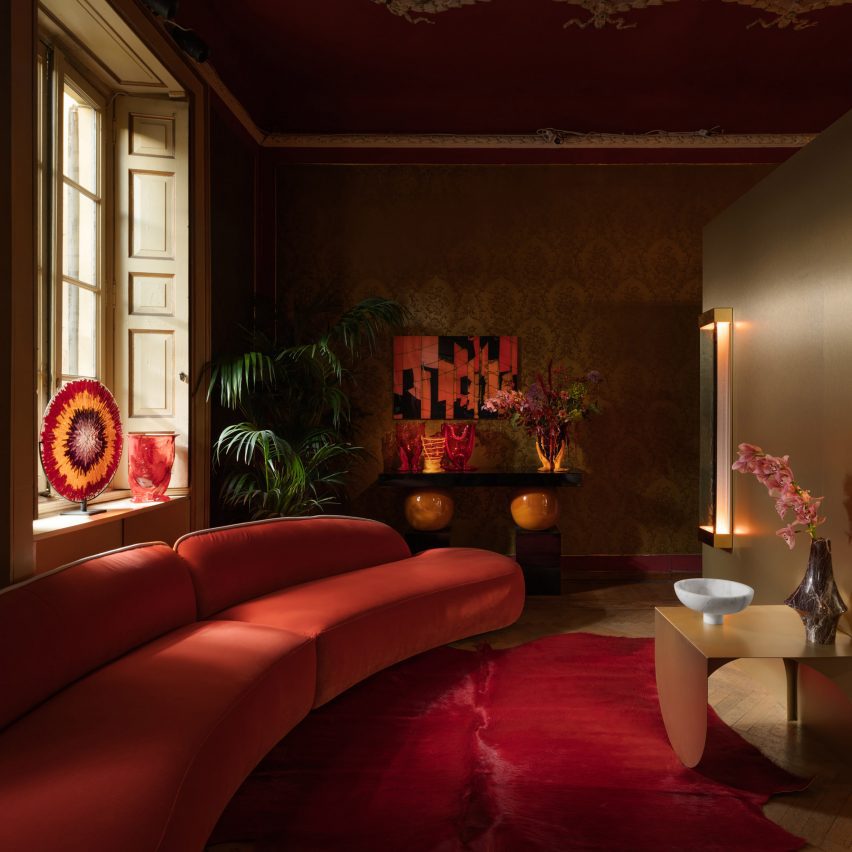
Maximalism
Flying in the face of a looming global recession, the trend towards maximalist interiors is still going strong.
On show throughout the city was an all-gold furniture collection by Dolce & Gabbana, paisley-print seating by Etro and a fabric collection by department store Liberty, defined by bold stripes and abstract patterns that take cues from Italian futurism.
In the 5vie district, Irish interiors studio Kingston Lafferty Design revamped an entire living room inside an old 1930s apartment (above), contrasting its ornate floral wallpaper with statement pieces including a red leather rug and the Erasmo Sofa by Afra and Tobia Scarpa.
Elsewhere, Milanese fashion and homeware brand La DoubleJ celebrated its first foray into wallpaper by giving a pattern clash-heavy makeover to the bathrooms of eight venues across Milan – from Pasticceria Cucci to the Apophis Club.
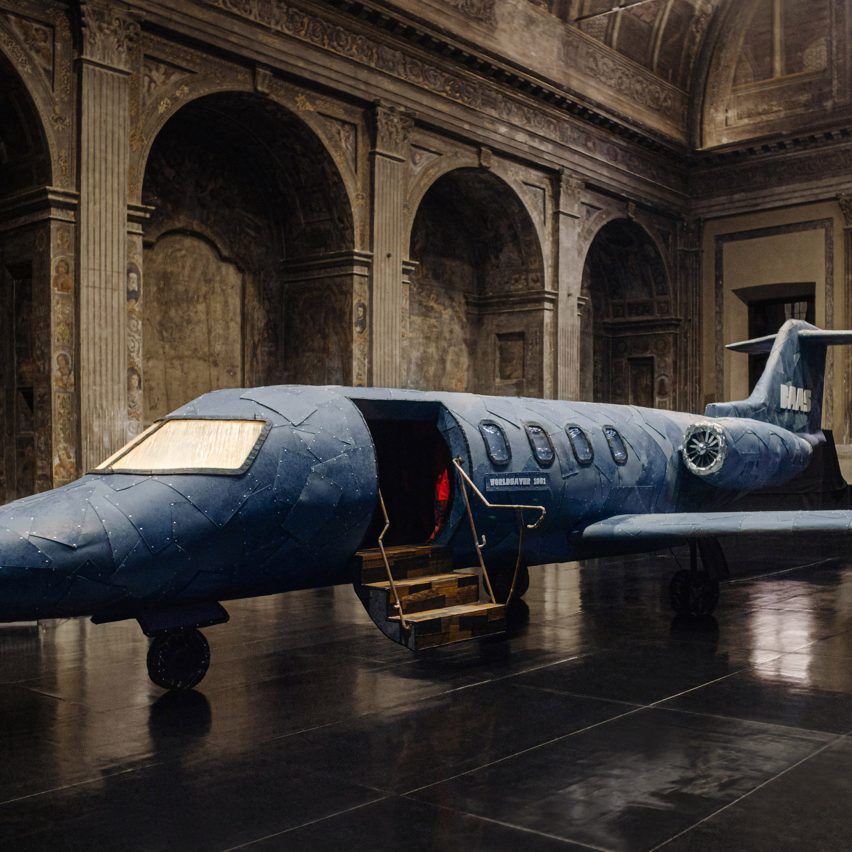
Fashion takes design week by storm
Fashion houses from Dior to Louis Vuitton have long had a presence at Milan design week. But after the pandemic set furniture sales skyrocketing, this year practically saw the city overrun with branded installations from the likes of Timberland, Stone Island, Sunnei, Jimmy Choo, Fila and more.
Among the notable newcomers was Italian fashion house Bottega Veneta, which closed its entire Montenapoleone boutique for the occasion and transformed it into a grotto-like installation designed by Italian Radical Design pioneer Gaetano Pesce.
And in the 17th-century church of San Paolo Converso, G-star RAW and Dutch designer Maarten Baas used boards made from the brand's recycled denim waste to form jeans-shaped cabinets and an entire private jet (above) in a tongue-in-cheek comment on overconsumption.
Meanwhile, Dior brought back Philippe Starck to once again reimagine its Medallion chair and Loewe's Jonathan Anderson reimagined the classic Welsh stick chair in a range of unexpected materials from foil to shearling.
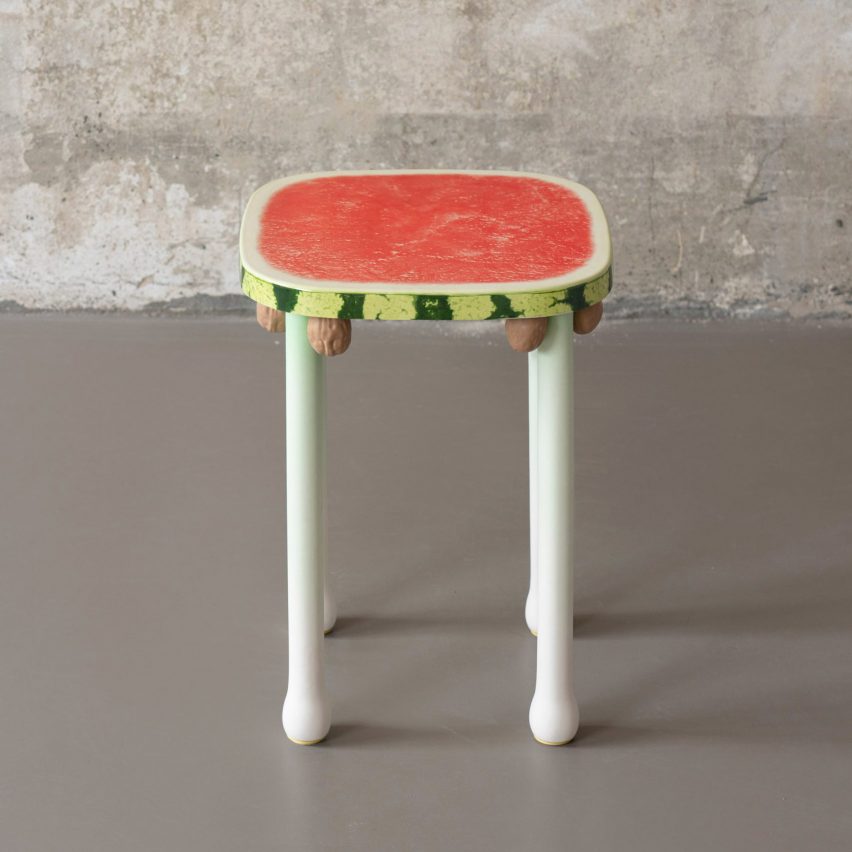
Food for thought
In a country as innately epicurean as Italy, it makes sense that food wouldn't just be contained to plates. Instead, designers created a veritable buffet of different products, integrating the distinctive shape of grocery items from carrot sticks to penne tubes.
While the pandemic-born Basketclub collective displayed baskets woven from real bread, marshmallow twists and candy necklaces, Austrian designer Robert Stadler used ceramic fruit and veg to form his OMG-GMO furniture collection, which features aubergines as table legs and giant watermelon slices for seats (above).
Taking a more abstract approach, Montreal designer Chris Fusaro exhibited a collection of bronze pasta strainers and bowls, which he cast in moulds made from real pieces of pasta by adapting a technique traditionally used to make jewellery.
Food designer Laila Gohar also returned to Milan design week following the launch of her homeware brand last year to create dramatic culinary displays for an exhibition by material brand SolidNature and OMA, as well as for Ingo Maurer and Hermès.
Milan design week took place from 18 to 23 April. See our Milan design week 2023 guide on Dezeen Events Guide for information about the many other exhibitions, installations and talks that took place throughout the week.